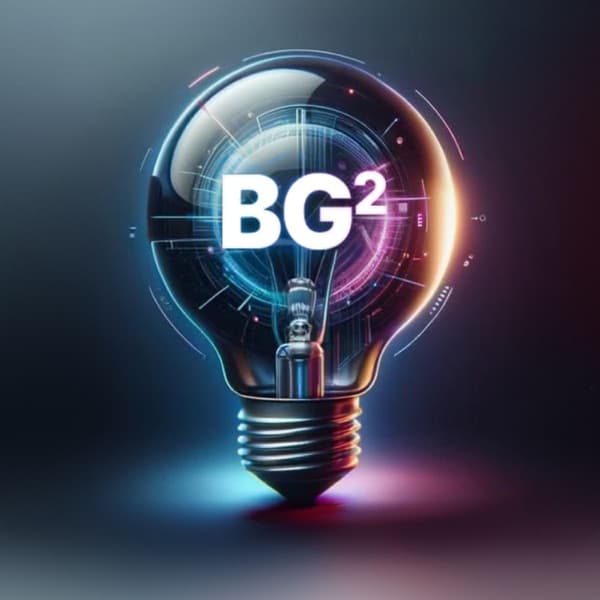Modern Wisdom: The discussion focuses on sharing effective life hacks and New Year's resolutions for personal growth and productivity.
BG2Pod with Brad Gerstner and Bill Gurley: The discussion focuses on the ongoing importance of scaling in data centers, particularly in the context of AI and semiconductor industries, with insights from Dylan Patel of SemiAnalysis.
How I Built This with Guy Raz: The Container Store's founders, Kip and Sharon Tindall, turned a novel idea of selling storage solutions into a successful business, emphasizing customer service and innovative products.
Modern Wisdom - #881 - Christmas Special - Life Hacks, Biggest Lessons & Best Resolutions
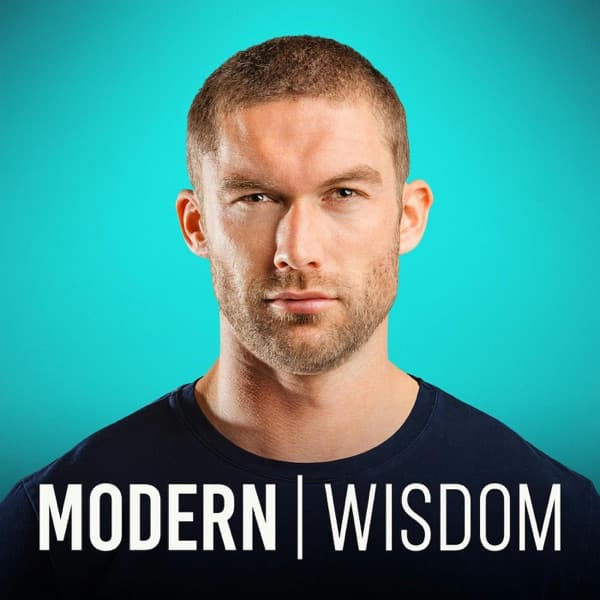
The conversation revolves around sharing personal experiences and insights on life hacks and New Year's resolutions that have proven effective over time. The hosts discuss the importance of adopting resolutions that are sustainable and have a high return on investment (ROI). They emphasize the value of learning from past experiences and using them to inform future decisions. Practical examples include using a Ninja Creamy for healthy desserts, leveraging gratitude triggers to improve mindset, and employing tools like walking pads and portable laptop stands to enhance productivity. The hosts also highlight the significance of focusing on outcomes rather than inputs, and the importance of maintaining a steady trajectory in personal and professional growth. They suggest using frameworks like dividing goals into quarterly targets and focusing on single tasks to improve efficiency. Additionally, they discuss the benefits of journaling and the Socratic method for personal reflection and growth.
Key Points:
- Adopt sustainable resolutions with high ROI, like using a Ninja Creamy for healthy desserts or gratitude triggers for mindset improvement.
- Focus on outcomes over inputs; prioritize effectiveness and steady growth over rapid progress.
- Use tools like walking pads and portable laptop stands to enhance productivity and maintain good posture.
- Implement frameworks for goal setting, such as dividing goals into quarterly targets and focusing on single tasks.
- Incorporate journaling and the Socratic method for personal reflection and continuous improvement.
Details:
1. 🎄 Christmas Special & Reflective Resolutions
1.1. Reflective Christmas Period
1.2. Effective New Year's Resolutions
2. 🎙️ Life Hacks & Lessons from 2024
- Listeners are encouraged to take time to down-regulate and unplug, especially since there is no episode on Thursday, providing an opportunity for a break.
- The episode is a Christmas special, featuring Johnny Youssef from Propane Fitness and George Mack, highlighting a reunion in the original setting of the show in Newcastle-upon-Tyne.
- The segment emphasizes the importance of taking breaks and reflects on the show's origins, offering a nostalgic connection for long-time listeners.
- The combination of taking a break and revisiting the show's roots provides a unique opportunity for reflection and relaxation during the holiday season.
3. 🍦 Culinary Gadgets & Ninja Creamy
3.1. Ninja Creamy and Culinary Gadgets
3.2. Lifestyle Hacks and Tips
4. 📚 Audiobooks, Sleep, & Productivity Tools
4.1. Audiobooks and Fiction for Relaxation
4.2. Maximizing Existing Resources
4.3. Travel Tips
4.4. Sleep Optimization
4.5. Posture and Productivity Tools
5. 🚶♂️ Walking Pads & Work Efficiency
- Walking pads, when used with standing desks, can significantly increase daily step count, reaching up to 4,000 steps per hour, thereby promoting physical activity during work hours.
- The optimal walking speed for maintaining work efficiency on walking pads is approximately 3.5 (units not specified), which allows for a balance between movement and concentration.
- Walking pads are particularly effective for tasks such as emails and phone calls, as they help users remain active and focused, potentially enhancing productivity.
- Movement during intense phone calls can improve cognitive function, as physical activity is linked to better thinking processes.
- High-profile individuals, like Ari Emanuel, reportedly use treadmills for phone calls to stay active and focused, highlighting the practical application of walking pads in professional settings.
- Integrating walking pads into daily routines, such as morning work sessions, can help manage stress and boost productivity, making them a valuable tool for work-life balance.
- Using social media during cardio sessions on walking pads can make workouts more engaging, though it may have implications for cognitive health.
- Walking meetings, a concept popularized by Steve Jobs, can be effective for certain types of discussions, depending on the meeting's nature and participants' comfort with walking.
- Walking pads are accessible on platforms like Amazon, with prices ranging from £50-£300, catering to various budget needs.
6. 🧠 Mindset Shifts & Personal Growth
6.1. Walking Meetings and Productivity
6.2. Semantic Tree Learning Approach
6.3. Reframing Challenges and Interpreting Problems Positively
7. 💼 Business Challenges & Success Strategies
7.1. Business Challenges
7.2. Personal Satisfaction & Success
8. 🛌 Sleep Optimization & Daily Habits
8.1. Outcomes Over Inputs
8.2. Importance of Sleep and Self-Compassion
8.3. Values and Productivity
8.4. 75 Hard and Habit Formation
8.5. Goal Setting and Balance
8.6. Single Tasking and Sleep Habits
9. 📝 Journaling, Lessons, & Reflections
9.1. Caffeine and New Year's Resolutions
9.2. Journaling and Its Value
9.3. Growth and Progress
9.4. Goals and Actions
9.5. Socratic Method and Doom Loops
BG2Pod with Brad Gerstner and Bill Gurley - AI Semiconductor Landscape feat. Dylan Patel | BG2 w/ Bill Gurley & Brad Gerstner
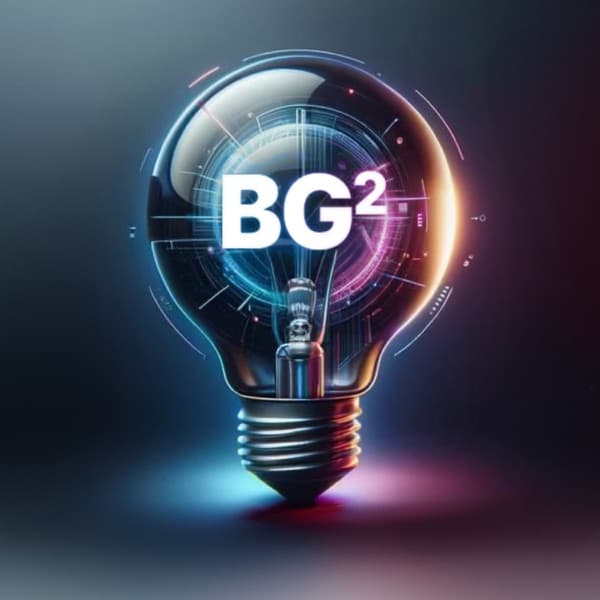
The conversation explores the significant investments by tech giants like Amazon, Google, and Microsoft in building large-scale data centers, emphasizing that scaling is far from dead. These companies are investing heavily in infrastructure to support AI workloads, indicating a belief in the continued importance of scale. Dylan Patel from SemiAnalysis provides insights into the semiconductor industry, highlighting NVIDIA's dominance in AI workloads and the competitive landscape involving companies like AMD and Google. Patel discusses the challenges and opportunities in scaling AI models, the role of synthetic data, and the importance of inference time reasoning, which is more compute-intensive than pre-training. The discussion also touches on the future of semiconductor investments, the role of custom ASICs, and the potential for continued growth in AI infrastructure spending.
Key Points:
- Scaling is crucial for tech giants like Amazon, Google, and Microsoft, who are investing in large data centers to support AI workloads.
- NVIDIA dominates AI workloads, with significant investments in hardware and software to maintain its lead.
- Inference time reasoning is more compute-intensive than pre-training, requiring substantial infrastructure investments.
- Synthetic data and inference time compute are emerging as new vectors for scaling AI models.
- The semiconductor industry is poised for continued growth, driven by AI infrastructure investments and custom ASIC developments.
Details:
1. 🔍 Is Scaling Dead? The Data Center Boom
- Mark Zuckerberg is building a two gigawatt data center in Louisiana, indicating significant investment in scaling infrastructure.
- Amazon is constructing multi-gigawatt data centers, showcasing their commitment to scaling operations.
- Google and Microsoft are also building multiple gigawatt data centers and investing billions in fiber to interconnect them, aiming to achieve scale by making them function as a single entity.
- The strategy involves connecting data centers with high bandwidth to operate collectively towards unified tasks, challenging the notion that scaling is obsolete.
2. 🤝 Meet Dylan Patel: Semiconductor Expert
- Dylan Patel is recognized as a leading expert in the semiconductor industry, providing insights into market trends and technological advancements.
- He has a strong track record of analyzing semiconductor market dynamics, which helps companies make informed strategic decisions.
- Patel's expertise is sought after by major industry players who rely on his analysis to guide their investment and development strategies.
- His insights have been instrumental in helping companies optimize their product development cycles and improve operational efficiencies.
3. 🔧 The Changing World of Compute and AI
- The world of compute is undergoing radical changes, significantly influenced by advancements in AI.
- Dylan Patel from Semi Analysis is recognized for leading a highly respected research group in the global semiconductor industry.
- The discussion aims to explore the intersection of technical knowledge on semiconductor architectures, scaling, and market players with business issues relevant to the audience.
- The goal is to provide a snapshot of semiconductor activities related to the AI wave and contextualize their impact.
4. 🕹️ Dylan's Journey: From Xbox Repair to SemiAnalysis
4.1. Dylan's Early Technical Experience
4.2. Dylan's Investment in Semiconductors
5. 📊 SemiAnalysis: A Deep Dive into Semiconductor Research
- The company provides specialized services to hyperscalers, large semiconductor companies, private equity, and hedge funds, focusing on data-driven insights.
- They offer detailed data on global data centers, including location, power capacity, and build-out progress, which is crucial for strategic planning.
- The company tracks 1,500 semiconductor fabs worldwide, prioritizing the 50 most critical ones, ensuring focused and relevant insights.
- Supply chain monitoring includes components such as cables, servers, boards, and transformer substation equipment, providing a comprehensive view of the industry landscape.
- Their heavily data-driven approach emphasizes numbers and forecasting, enabling clients to make informed decisions.
- Consulting services are available to help clients leverage these insights effectively.
6. 💡 The AI and Semiconductor Landscape: NVIDIA's Dominance
- NVIDIA's dominance in the semiconductor industry is attributed to hustle, hard work, and focusing on essential tasks.
- The industry is two years into a significant build-out phase, characterized by rapid and dynamic changes.
- Strategic planning is crucial as the industry approaches the end of 2024, with implications for 2025, 2026, and beyond.
- The evolving landscape will have financial consequences amounting to trillions of dollars.
- Understanding the semiconductor industry's context is essential, as it is undergoing transformative changes driven by AI advancements.
- NVIDIA's strategic focus and execution have positioned it as a leader, setting benchmarks for competitors.
- The industry's growth trajectory is influenced by technological innovations and market demands, requiring agile adaptation.
7. 🔗 Google's AI Workloads and NVIDIA's Three-Headed Dragon
- NVIDIA dominates the global AI workload market with over 98% share, excluding Google.
- When including Google, NVIDIA's share drops to approximately 70% due to Google's significant AI workload, particularly in production.
- Google's AI-driven businesses, such as Google Search and Google Ads, are among the largest in the world, impacting NVIDIA's market share.
- Google's AI workloads are substantial enough to significantly alter NVIDIA's market dominance, highlighting the competitive landscape in AI technology.
8. 🧠 AI Models and the Role of Transformers
- Google's production workloads for both non-LLM and LLM run on their internal silicon, highlighting their reliance on proprietary chips for efficiency.
- Despite perceptions that Google lagged behind in transformers and LLMs, they have been utilizing transformers like BERT in their search workloads since 2018, demonstrating early adoption and integration into core services.
- Google's use of transformers extends to their search and ads business, indicating a strategic application of AI models in revenue-generating operations.
9. ⚙️ NVIDIA's Competitive Edge: Hardware and Software Integration
- NVIDIA holds a 98% market share in the workloads people purchase for their own use, indicating a dominant position in the industry.
- Google is a significant customer of NVIDIA, purchasing GPUs for both internal workloads and Google Cloud services, which underscores NVIDIA's strategic importance in cloud AI services.
- Google's GPU purchases are primarily for Google Cloud, which rents out these GPUs to customers, highlighting NVIDIA's role in enabling cloud-based AI solutions.
- Despite having some internal silicon customers like Apple, Google's external rental business for AI heavily relies on NVIDIA GPUs, showcasing NVIDIA's critical role in supporting AI infrastructure.
10. 🔄 The Future of AI Workloads: Scaling and Synthetic Data
- NVIDIA's dominance is attributed to their aggressive pursuit of production goals, enabling them to release chips faster than competitors.
- The acquisition of Mellanox has strengthened NVIDIA's networking capabilities, contributing to their market leadership.
- NVIDIA's integrated approach, combining rapid chip deployment and advanced networking, creates a competitive advantage unmatched by other semiconductor companies.
- The strategic acquisition of Mellanox not only enhanced NVIDIA's networking capabilities but also positioned them to better handle the increasing data demands of AI workloads.
- NVIDIA's leadership in AI workloads is further solidified by their ability to integrate cutting-edge technology with strategic business moves, setting a high bar for competitors.
11. 📈 The Semiconductor Industry: Trends and Predictions
11.1. NVIDIA's Competitive Moats and System Architecture
11.2. AI Model Scaling and NVIDIA's Strategic Investments
11.3. NVIDIA's Market Position and Competitive Landscape
11.4. AI Workloads and Data Center Evolution
11.5. Pre-Training Scaling Laws and Data Utilization
11.6. Inference Time Compute and Synthetic Data
11.7. Market Dynamics and Investment Strategies
11.8. AI Model Deployment and Economic Implications
11.9. Future Trends and Predictions
How I Built This with Guy Raz - The Container Store: Kip and Sharon Tindell

The Container Store was founded in 1978 by Kip and Sharon Tindall, who saw an opportunity in selling storage solutions like cardboard boxes and wire baskets, which were not readily available to consumers at the time. Despite initial skepticism, the store quickly gained popularity due to its unique offerings and focus on organization. The Tindalls emphasized customer service and employee empowerment, which became a cornerstone of their business model. They expanded methodically, using earnings to fund growth rather than external investments. The company eventually went public to allow employees to own stock, but faced challenges from changing retail landscapes and competition from online retailers like Amazon. Despite these challenges, the Tindalls' focus on customer service and innovative products helped them build a strong brand. They eventually retired, leaving the company to navigate the evolving retail environment.
Key Points:
- The Container Store was founded in 1978, focusing on unique storage solutions not available to consumers.
- Kip and Sharon Tindall emphasized customer service and employee empowerment, leading to low employee turnover.
- The company expanded using earnings rather than external investments, maintaining control over growth.
- Going public allowed employees to own stock, but also brought challenges with market pressures and competition.
- The Tindalls retired, leaving the company to adapt to a changing retail landscape dominated by online sales.
Details:
1. 🎧 Introduction and AI Writing Tools
1.1. Wondery Plus Subscription Benefits
1.2. Availability of Wondery Plus
1.3. General AI Effectiveness
1.4. Grammarly as a Key AI Tool
2. 📚 Audible's Best of 2024 and Health Tech
2.1. Audible's Best of 2024
2.2. Health Tech - Lingo Bio Wearable
3. 📦 The Birth of The Container Store
- The Container Store opened its first location on July 1st, 1978, marking the beginning of a new retail concept focused on storage solutions.
- Initial public perception was skeptical, with many questioning the viability of a store dedicated to selling 'empty boxes.'
- The founders, Kip Tindell, Garrett Boone, and architect John Mullen, faced personal skepticism and embarrassment when explaining the business concept before launch.
- Despite initial doubts, The Container Store successfully turned the idea of selling storage solutions into a thriving business, demonstrating the potential of niche retail markets.
- The founders' commitment to customer service and innovative product offerings played a crucial role in overcoming early challenges and establishing a loyal customer base.
4. 🏗️ Early Challenges and Growth
- Before 1980, consumers found it difficult to purchase flat cardboard boxes, leading to the idea of a store selling such items.
- Kip Tindall and Garrett Boone faced skepticism when proposing a store selling cardboard boxes and organizational items.
- In 1978, they opened the Container Store in Dallas, selling items like milk bottle crates and wire drawers, which were not readily available to consumers.
- The store was successful, leading to expansion across America over 30 years.
- Despite its success, the Container Store is currently facing bankruptcy, with its founders no longer involved.
- The Container Store created a significant impact on the multi-billion dollar home organization industry.
- The transition from success to bankruptcy was influenced by increased competition and changing consumer preferences.
- The Container Store's innovative approach initially filled a market gap, but failure to adapt to market changes contributed to its financial struggles.
5. 💑 Kip and Sharon's Journey
5.1. Kip and Sharon's Meeting
5.2. Development of Kip and Sharon's Relationship
6. 🛠️ Building the Business and Product Innovation
6.1. Educational Background and Early Career
6.2. Transition to Entrepreneurship
7. 🏬 Store Expansion and Financial Strategy
- Garrett and the speaker maintained a friendship from high school through college, discussing the possibility of starting a store together.
- The speaker worked at Storehouse, a contemporary furniture store, earning $400-$500 a month, which was significant for a student at the time.
- Storehouse, where Garrett also worked, went out of business in 2006, but it provided experience in opening stores.
- Initially, they considered opening a handmade furniture store but shifted focus to housewares due to low traffic and excitement in furniture stores.
- The idea of a housewares store was unconventional in the late 70s, facing skepticism from others.
8. 📦 The Storage Revolution and Product Development
8.1. The Importance of Organization
8.2. Challenges in the Late 70s Storage Industry
9. 💡 Naming and Launching the Store
9.1. Identifying Market Needs
9.2. Sourcing and Building Relationships with Manufacturers
9.3. Launching the First Store
10. 📈 Growth, Challenges, and Principles
10.1. The Container Store's Early Days and Naming
10.2. Innovation Challenges and Solutions
11. 🛒 Expansion and Employee Culture
11.1. Store Concept and Initial Challenges
11.2. Early Success and Word of Mouth
11.3. Employee Involvement and Product Strategy
11.4. Financing and Growth Strategy
12. 💼 Private Equity, Going Public, and Strategic Decisions
12.1. Business Growth and Leadership Dynamics
12.2. Sales Strategy and Employee Engagement
12.3. Mentorship and Influence
12.4. Expansion and Cultural Principles
12.5. Strategic Acquisition and Product Success
12.6. Private Equity and Financial Strategy
13. 📉 Challenges of Public Trading and Market Changes
13.1. Going Public and Its Implications
13.2. Market Challenges and Competition
14. 🔄 Adapting to Retail Changes and Customer Service
14.1. Challenges of Being a Public Company
14.2. Retail Industry Evolution
14.3. Vendor Relationships and Market Expansion
14.4. Customer Service Training
14.5. Leadership Transition and Business Challenges
14.6. Success Factors and Reflection
15. 🎤 Reflections, Legacy, and Conclusion
- Marie Kondo collaborated with The Container Store to release a line of minimalist storage solutions, highlighting a strategic partnership that aligns with both brands' values.
- Listeners are encouraged to follow the podcast and sign up for the newsletter to stay updated, indicating a strategy for audience retention and engagement.
- The episode production involved a team with specific roles, showcasing the collaborative effort in content creation.
- Listeners can access ad-free content by subscribing to Wondery Plus or through Amazon Music, offering multiple platforms for enhanced user experience.
- A promotional offer from Land's End Outfitters provides a 20% discount, demonstrating a marketing strategy to attract business customers.
Included Channels
 Lex Fridman Podcast
Lex Fridman Podcast All-In with Chamath, Jason, Sacks & Friedberg
All-In with Chamath, Jason, Sacks & Friedberg Modern Wisdom
Modern Wisdom Greymatter
Greymatter In Depth
In Depth a16z Podcast
a16z Podcast Lenny's Podcast: Product | Growth | Career
Lenny's Podcast: Product | Growth | Career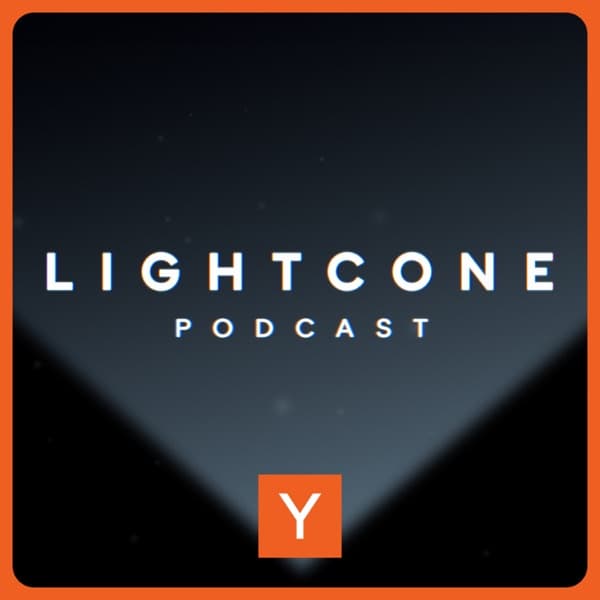 Lightcone Podcast
Lightcone Podcast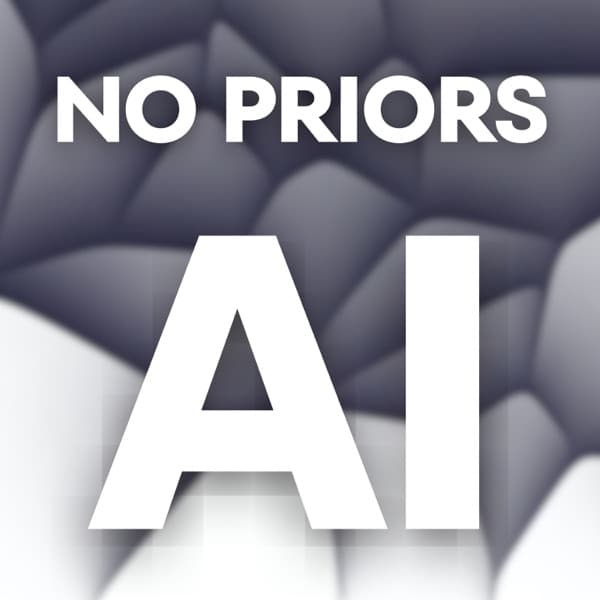 No Priors AI
No Priors AI The Twenty Minute VC (20VC): Venture Capital | Startup Funding | The Pitch
The Twenty Minute VC (20VC): Venture Capital | Startup Funding | The Pitch How I Built This with Guy Raz
How I Built This with Guy Raz BG2Pod with Brad Gerstner and Bill Gurley
BG2Pod with Brad Gerstner and Bill Gurley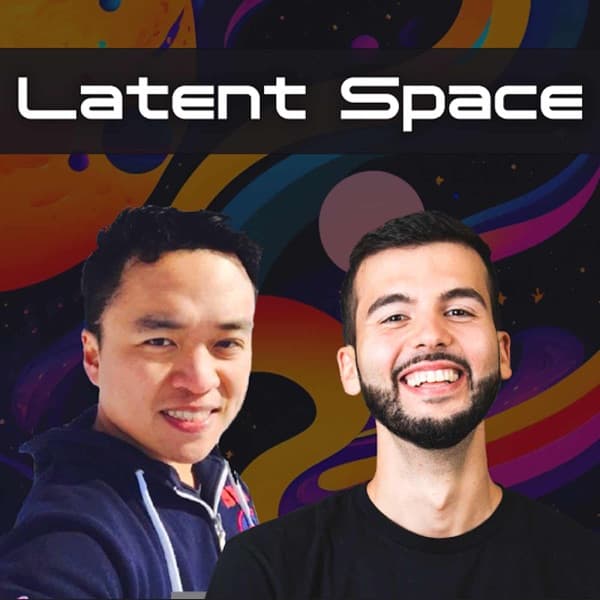 Latent Space: The AI Engineer Podcast
Latent Space: The AI Engineer Podcast
